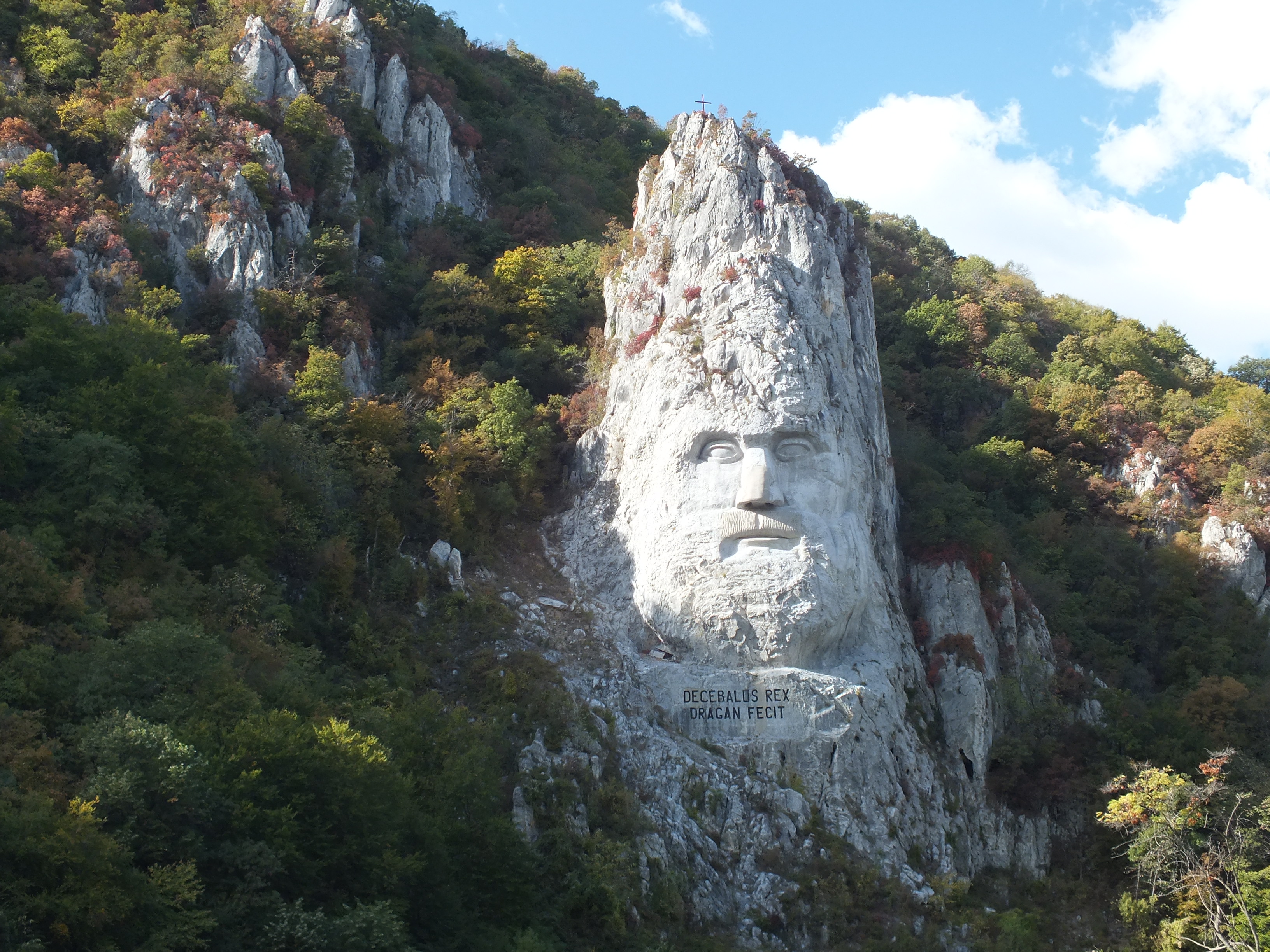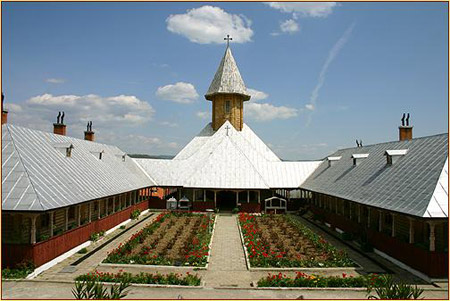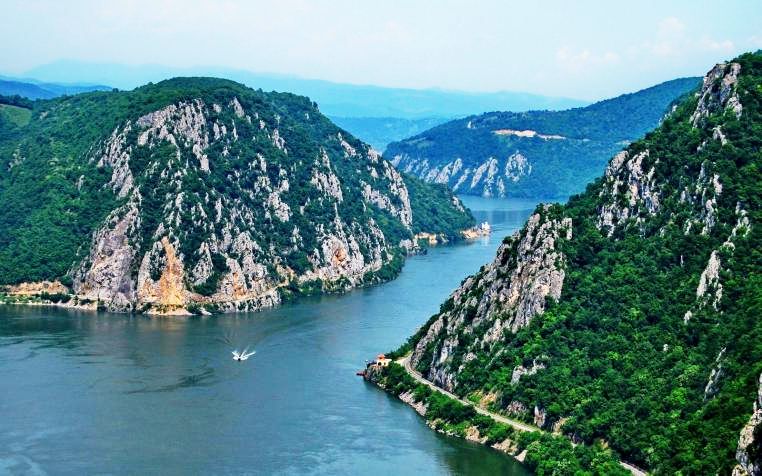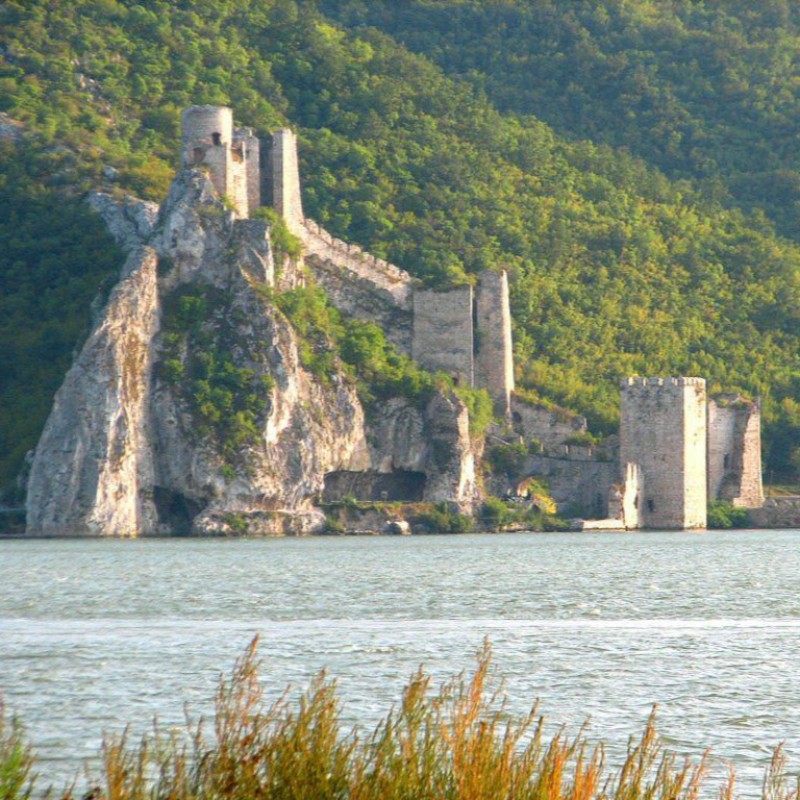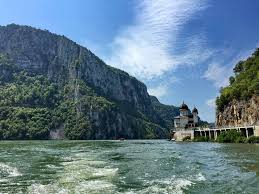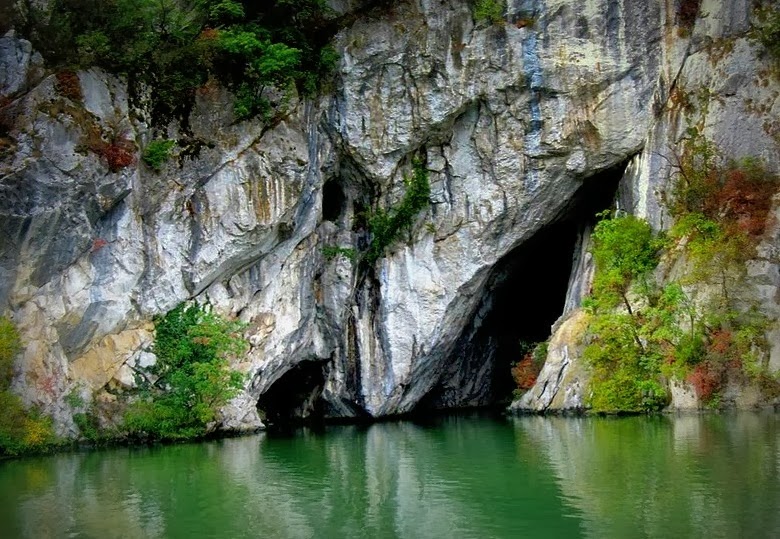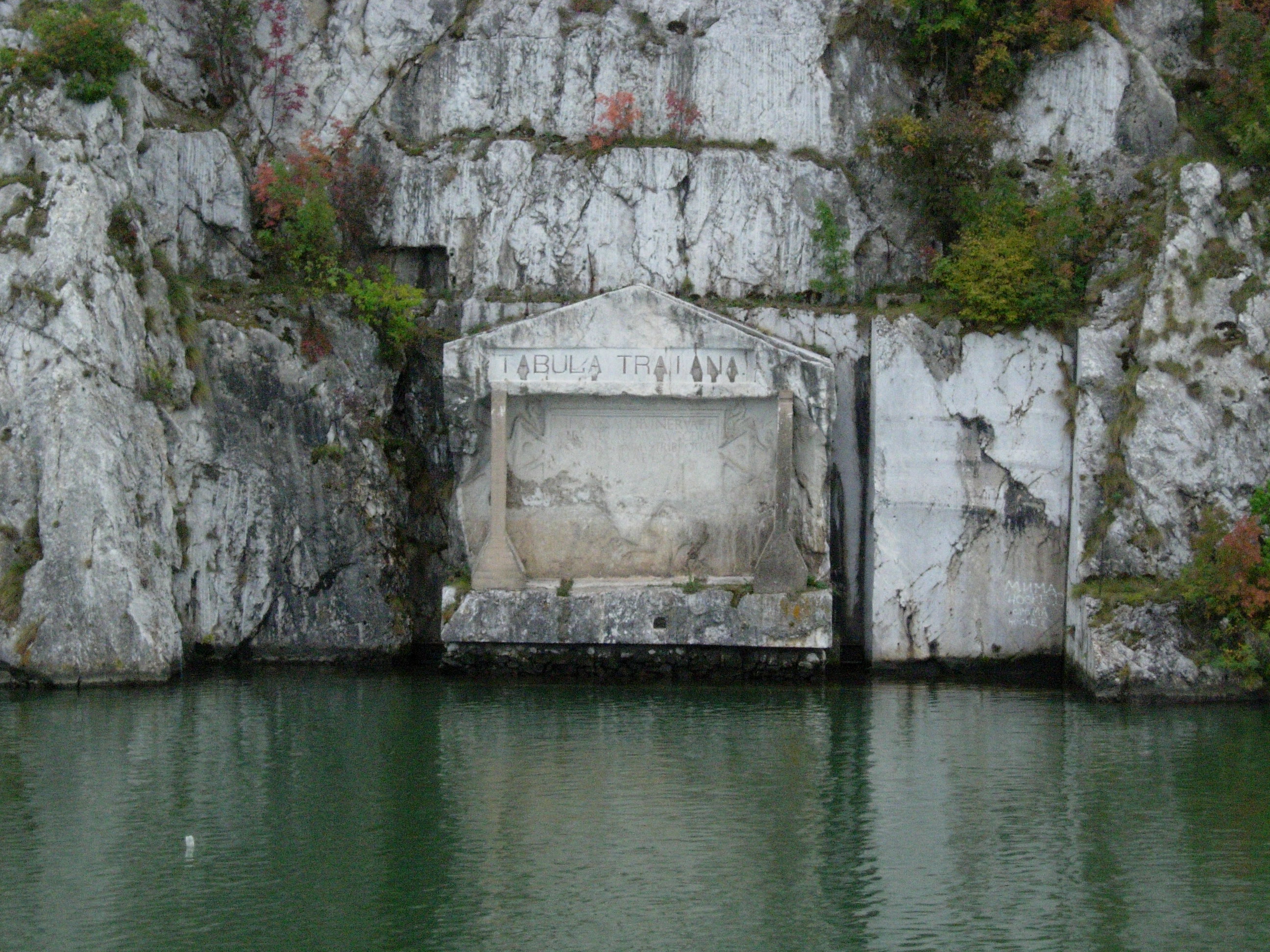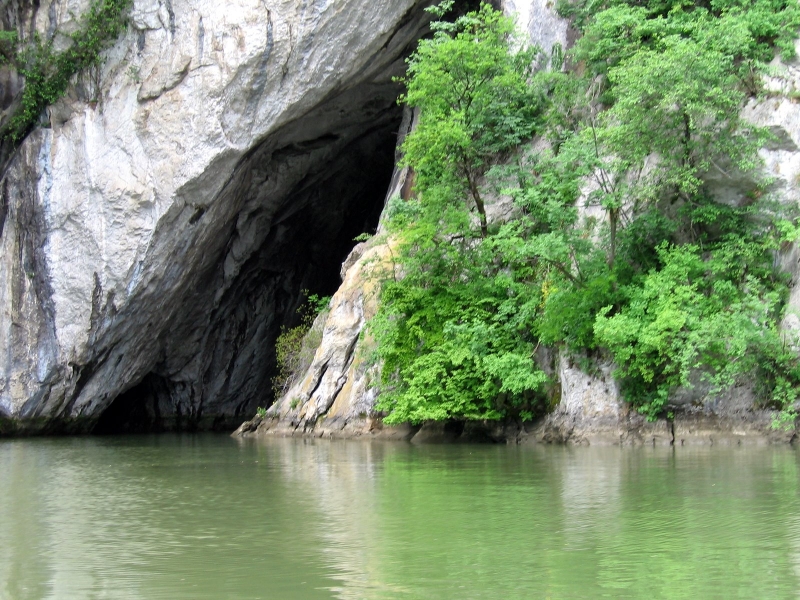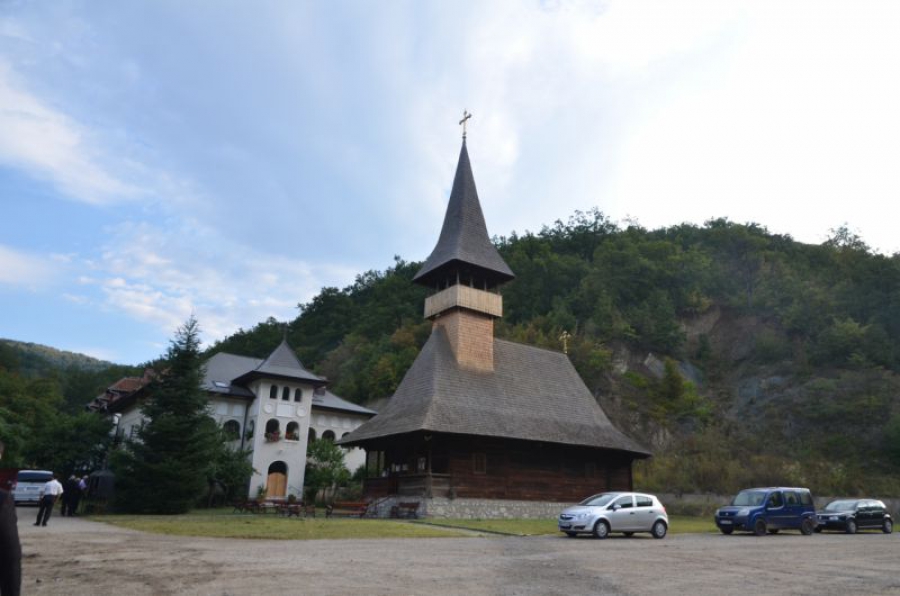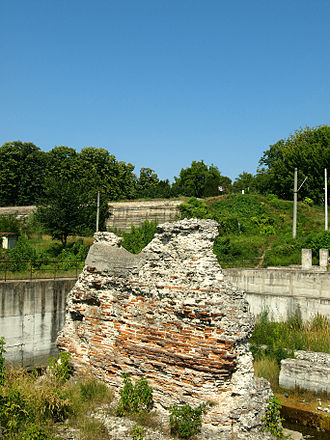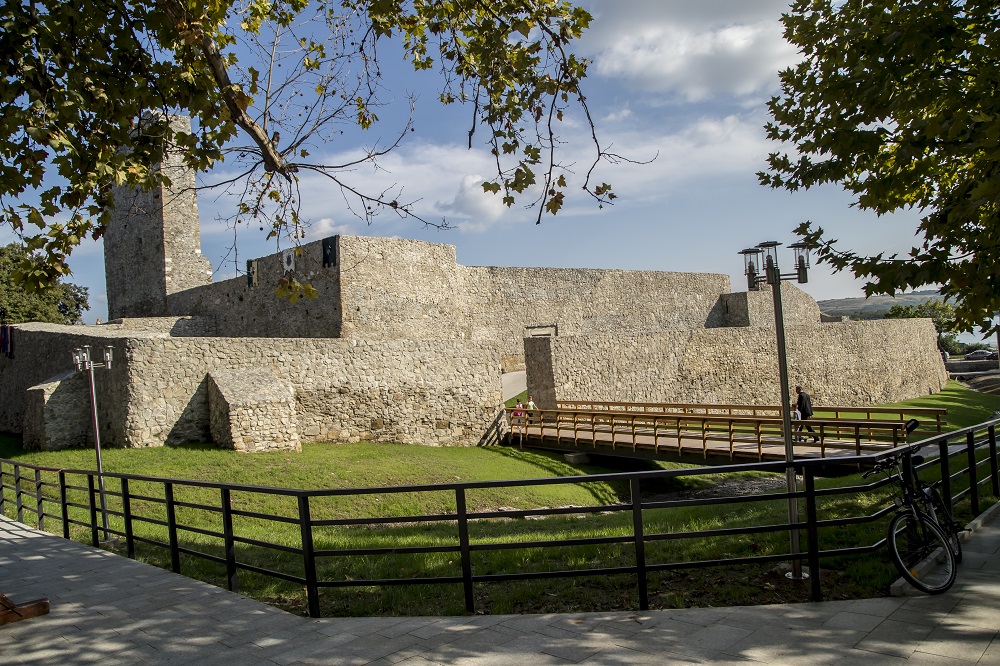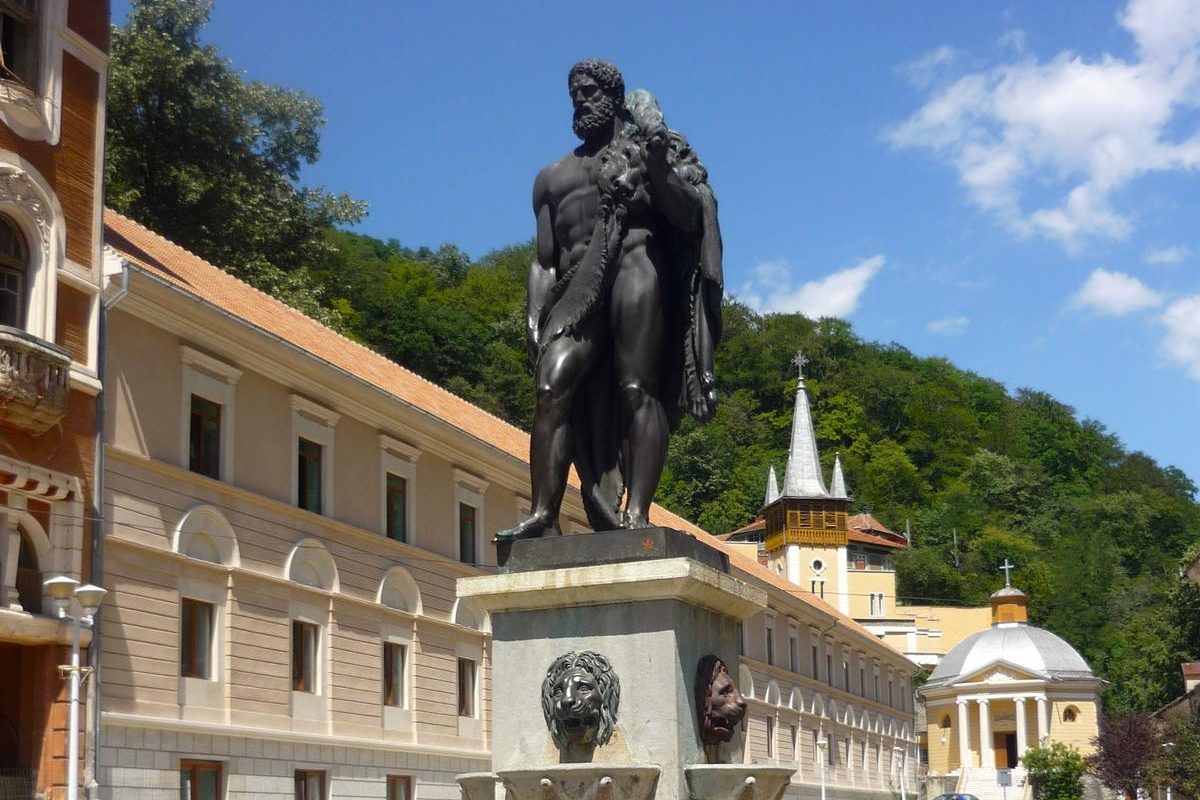Statue of Decebal
Dacian king Decebal face is a high relief of 55 m [1] button on the rocky bank of the Danube between localities Eşelniţa and Dubova, near the city of Orşova, Romania. The bas-relief depicting Decebal, the last king of Dacia and is carved into a rock. It is the highest stone sculpture in Europe. Protochronist businessman and historian Iosif Constantin Dragan was the one who promoted and financed the idea of this work conducted during 1994-2004.
Monastery of St. Anne Orşova
Monastery of St. Anna is located in the town of Orsova on the Danube Gorge, one of the most beautiful natural places in our country. It is located on the hilltop Santa, which dominates the town Orsova. It was founded by journalist Pamfil Şeicaru wars, who fought in the Orsova as second lieutenant of Infantry Regiment in World War 17.
Iron Gates
Boilers are a sector of the Danube Gorge passage through Carpathian Mountains. Have a length of about 9 km. In some places Danube narrows to 230 m, hampering navigation. The river is bordered by vertical walls, cliffs. The maximum depth of about 75 m. In the Boilers, water flow rate exceeds 5 m / s. Large boilers have a length of about 4 km, falling between massive Ciucarul Mare (Romania) and Veliki Strbac (Serbia). Limestone in the wall flanking the portion of the large boilers there are two cavities: caves mouth Ponicovei and Veterans. Small Boilers span a length of about 3 km and is positioned between the massive Ciucarul Mic (Romania) and Mali Strbac (Serbia) Iron Gates and massive Ciucarul High / Low Ciucarul part of the Iron Gates Natural Park.
Fortress Golubac
Golubac fortress is a medieval fortress located on the right bank of the Danube, 4 km downstream from the Serbian town of Golub in the Danube Gorge, near the Iron Gates. The fortress was built in the fourteenth century and is listed as cultural monuments of exceptional importance of the Republic of Serbia. Part of the city is covered by the Danube following the construction of the Iron Gates dam.
Monastery Mraconia
Mraconia monastery is in the village Duhová in Mehedinti county, at a distance of 15 km west from the town of Orsova. More specifically, it is on the left bank of the river that forms in that place, the most beautiful gorge all across her gorge stretched between Orsova and Moldova Noua. Mraconia monastery was built on the site of a point of observation and control of vessels on the Danube, because due to architectural relief by the narrowness of the gorge and there could not be two ships simultaneously passing. These narrowings and enlargements maximum river were named "Danube Boilers", in the opinion of many, instead of being the most beautiful place in the country.
Cave Ponicova
Ponicova Cave is the largest cave in the Danube Gorge. Its galleries totaling 1,660 m crossing Ciucaru Mare and out into the Danube. It is accessible by land or boat on the Danube. Upon entering the cave Ponicova creek of the same name created some short keys and long wild and a natural bridge about 25 m high and 6-8 m.
Cave Veterans
Veterans Cave is the first cave mapped in Romania, it was populated by over 4 millennia ago. Primitive man used it for shelter. As the site is to the massif Ciucaru Mare boilers Dunării.Daci to worship Zamolxis, Turks and Austrians turned it into a military unit. Many researchers claim that this cave was buried the legendary treasure of Maria Theresa. Veterans Grotto access is only by boat on the Danube motor. This is contained among the attractions offered cruises on the Danube by boat or ship, departures are organized in Orsova.
Vodita Monastery
Vodita Monastery is the oldest documented princely foundation and also the first monastic settlement in our country managed autonomously by specific rules Orthodox Church, established canons of St. Basil the Great. Dedicated Birth of the Virgin and St. Anthony the Great, monastery situated just a kilometer away from the waters of the Danube, in Mehedinti county, is located at a distance of 17 kilometers west of the town Drobeta Turnu Severin and approximately eight kilometers east of Orsova; the monastery right on the main road, sits a wooden crucifix.
Trajan's bridge leg
Trajan's Bridge was a bridge built by Apolodor of Damascus, the architect Column, between spring 103 and spring 105 [1] on the Lower Danube, east of Iron Gate in the town of Drobeta-Turnu Severin. The aim was to facilitate the construction of Roman troops led by Traian transport and supplies necessary of the two military campaigns to conquer Dacia king Decebal.
Băile Herculane
Herculane (Latin Aqua Herculis, German Herkulesbad, Hungarian Herkulesfürdő) is a city in Caras-Severin, Banat, Romania, consists of localities Herculane (residence) and Pecinisca. It has a population of 6019 inhabitants. The city is located on Cerna Valley, 5 km from DN 6 (E70), the main road artery linking west of Bucharest.
